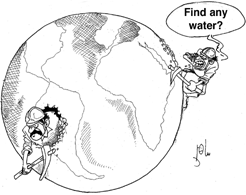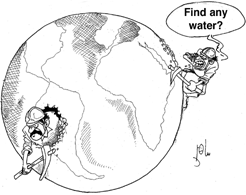
Ongoing crises in Yemen Water policies needed: now [Archives:2003/07/Health]
February 17 2003
BY ISMAEL AL-GHABERI
YEMEN TIMES STAFF

Some cities such as Taiz are critically threatened, while in Sana’a the threat of drought is as close as it’s been in 15 years.
These studies confirm that the gap between consumption and available water resources is greatly increasing, especially since the growth rate in population is approximately 3.7%. This is considered one of the highest in the world.
As a consequence, an individual’s share of the present water resources is estimated to be 150 cubic meter per year. Meanwhile unjustified wastage of underground water (4.9 billion cubic meter yearly) takes place south, west, and east of Yemen, where the bulk of the population works in agriculture.
World average
Statistics indicate that regenerative water is about the same amount. And supposing that the population was around 16 million inhabitants then the share of each person this way would be 2.6 cubic meter, therefore the actual situation where the population is more than 18 million would be much worse comparing to North African or other Middle Eastern countries, where persons consumes 1,250 cubic meter annually, or to the world rate of 7,500 cubic meter annually.
International standards estimate 1,000 cubic meters for domestic water consumption and the nutrition needs require another 1,000 cubic meter of water yearly. According to those standards, Yemen is certainly a very poor country in water resources.
In 1994, statistics informed that the country’s water utilization reached 202 billion cubic meter, whereas underground water was estimated then to be 1.4 billion cubic meters. This means that the country used 1.2 billion cubic meters more than what fed to its water reserves.
More studies indicate that the western region of Yemen particularly suffers from the water problems; ironically it is this part that is inhibited by more than 90% of the population. The feeding into underground water in this area is around 1.1 billion cubic meters annually.
And in Sana’a, underground sinks the annual feeding is estimated to be 42 million cubic meters whereas the water consumption is 224 million cubic meters, that is four times more than the feeding. The only exception in this is Hadramout district where oil companies’ studies indicate the water storage is about 360 billion meters of static underground water.
Underground water
Efficient water management in Yemen is considered one of the most difficult challenges of the country during the coming years. During the last 30 years there has not been any significant improvement of the irrigation systems or in water consumption mechanisms, or even any tool to limit consumption of underground water.
On the contrary, the situation has only become worse. It could be said in this issue that the policies and instructions directed to the water problem were not effective and were not successful in finding economic alternatives to underground waters, and could not achieve a balance between stored and consumed water. In fact it was the opposite and the agriculture damns were reversed.
The past and current policy in agriculture was and still is an important factor in draining water sinks in many of the country’s regions. Also the environmental deterioration presented in discarding agricultural mountain fields and the traditional remedies to keep water lead to deforestation, which increased the threat of floods and reduced the feeding of water sinks. Also the concerned establishments did not work efficiently in directly consumption and this lead to more wastage and contributed in making the situation worse.
Programs and plans to reduce wastage must be executed. An effective strategy must be implemented immediately in order to save the situation and focus on the water balance in our country in a way that guarantees the continuity of water supply.
——
[archive-e:07-v:2003-y:2003-d:2003-02-17-p:./2003/iss07/health.htm]


